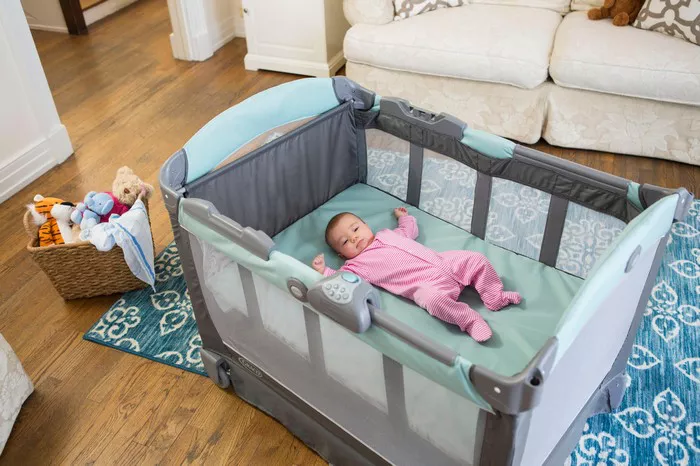The safety of infants during sleep is of paramount importance to parents and caregivers. One aspect of this concern revolves around whether bumpers are necessary for a crib. Bumpers, also known as crib bumpers or crib liners, are padded panels placed along the inside edges of a crib to cushion the baby from hitting their head against the hard surfaces or getting limbs stuck between the crib slats. However, debates have arisen regarding the safety and necessity of crib bumpers due to potential risks they pose to infants. In this article, we delve into the arguments for and against using bumpers in cribs, explore alternative solutions, and provide guidance on creating a safe sleep environment for babies.
The Evolution of Crib Bumpers
Traditionally, crib bumpers were a common feature in infant sleep environments, believed to enhance safety by preventing injuries such as bumps and bruises. They were also used to create an aesthetically pleasing nursery décor. However, as research on infant sleep safety advanced, concerns emerged about the potential hazards associated with bumpers. These concerns prompted a shift in recommendations from health and safety organizations.
Safety Concerns Associated with Crib Bumpers
The American Academy of Pediatrics (AAP) and other health authorities caution against the use of crib bumpers due to several safety risks they pose to infants. One primary concern is the risk of suffocation or strangulation. Infants have limited motor skills and may not be able to free themselves if they become trapped against a crib bumper, leading to a potentially fatal outcome. Moreover, as infants explore their surroundings, they may accidentally roll into the bumper and obstruct their airway.
Another concern is the risk of entrapment. Despite efforts to regulate crib bumper design to prevent entrapment hazards, there have been instances where babies’ limbs or heads have become wedged between the bumper and the crib mattress or between bumper ties, posing a significant risk of injury or suffocation.
Additionally, crib bumpers can increase the risk of overheating. The padding restricts airflow within the crib, potentially causing the baby to become too warm, which is associated with an increased risk of sudden infant death syndrome (SIDS).
Furthermore, there is a concern that crib bumpers may provide a climbing aid for infants as they grow older, increasing the risk of falls from the crib.
Alternatives to Crib Bumpers
Given the safety concerns associated with crib bumpers, parents and caregivers are encouraged to explore alternative strategies to promote a safe sleep environment for infants. Some alternatives include:
1. Firm Mattress: Use a firm mattress that fits snugly within the crib to reduce the risk of suffocation and entrapment.
2. Tight-Fitting Sheets: Use fitted crib sheets specifically designed to fit tightly around the mattress, ensuring there are no loose or excess fabric that could pose a suffocation hazard.
3. Sleep Sacks or Wearable Blankets: Instead of traditional blankets, consider using sleep sacks or wearable blankets to keep the baby warm without the risk of suffocation or overheating.
4. Mesh Crib Liners: If parents are concerned about their baby’s limbs getting caught between crib slats, they can opt for breathable mesh crib liners that provide a barrier without the suffocation risks associated with traditional bumpers.
5. Empty Crib: The safest sleep environment for infants is an empty crib, free from pillows, blankets, toys, and other soft objects that could pose suffocation or strangulation hazards.
Guidelines for Safe Sleep Practices
To ensure the safety of infants during sleep, parents and caregivers should adhere to the following guidelines:
1. Back to Sleep: Always place infants on their backs to sleep to reduce the risk of SIDS.
2. Use a Firm Mattress: Ensure the crib mattress is firm and fits snugly within the crib frame to prevent gaps where the baby could become trapped.
3. Avoid Overheating: Dress the baby in lightweight clothing appropriate for the room temperature and avoid overdressing or over-bundling.
4. Room Sharing, Not Bed Sharing: While room sharing is recommended for the first six to twelve months of life to facilitate nighttime feeding and monitoring, bed sharing increases the risk of suffocation, strangulation, and SIDS.
5. Regularly Inspect the Crib: Routinely check the crib for any loose or damaged parts that could pose a safety hazard, including loose screws, missing hardware, or damaged slats.
Conclusion
In conclusion, while crib bumpers were once considered a standard feature in infant sleep environments, their safety has come into question in recent years. The risks of suffocation, strangulation, entrapment, and overheating associated with crib bumpers outweigh any perceived benefits. Parents and caregivers are advised to prioritize creating a safe sleep environment for infants by following evidence-based guidelines and exploring alternative strategies that promote safe sleep practices. By prioritizing infant safety and adhering to recommended sleep practices, parents can help reduce the risk of sleep-related accidents and promote healthy sleep habits for their babies.


